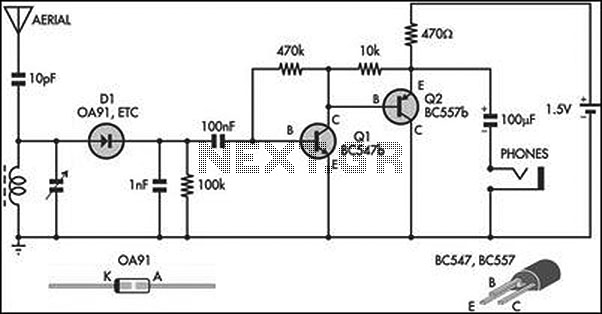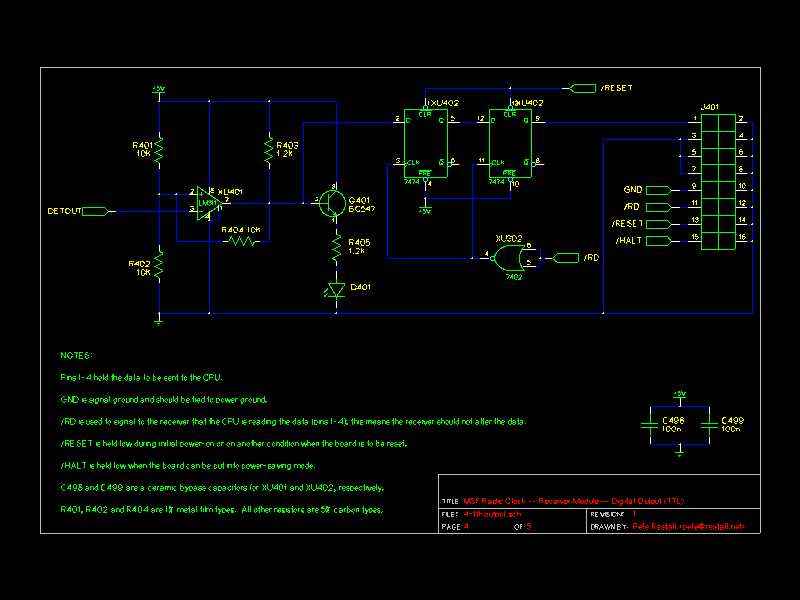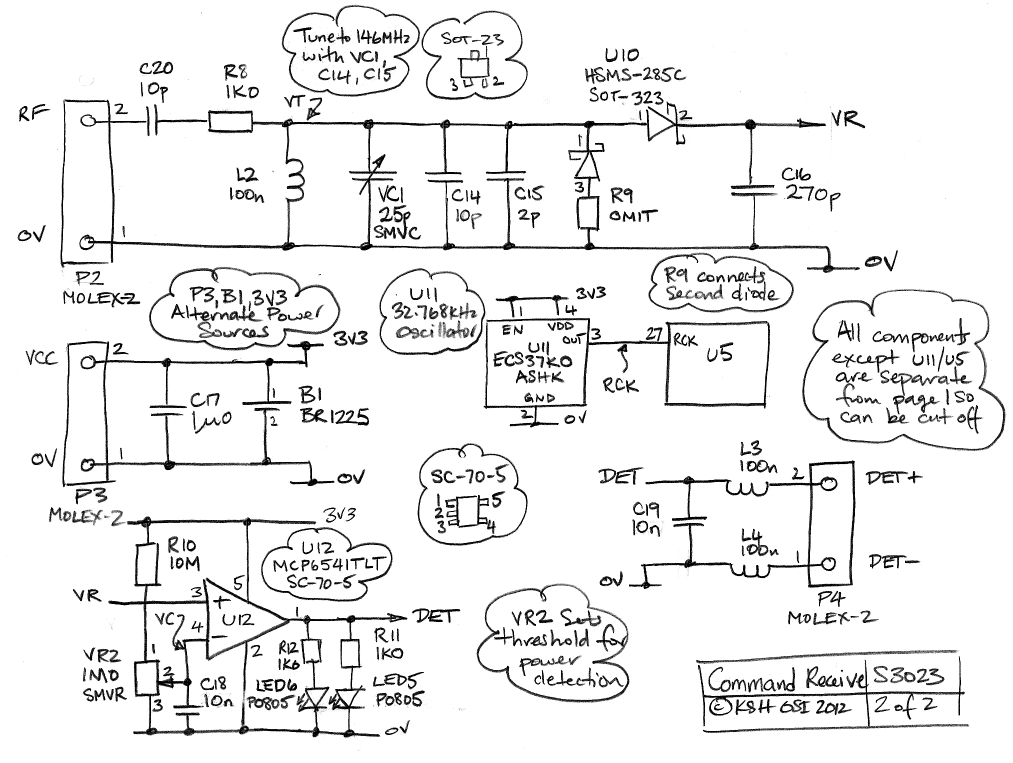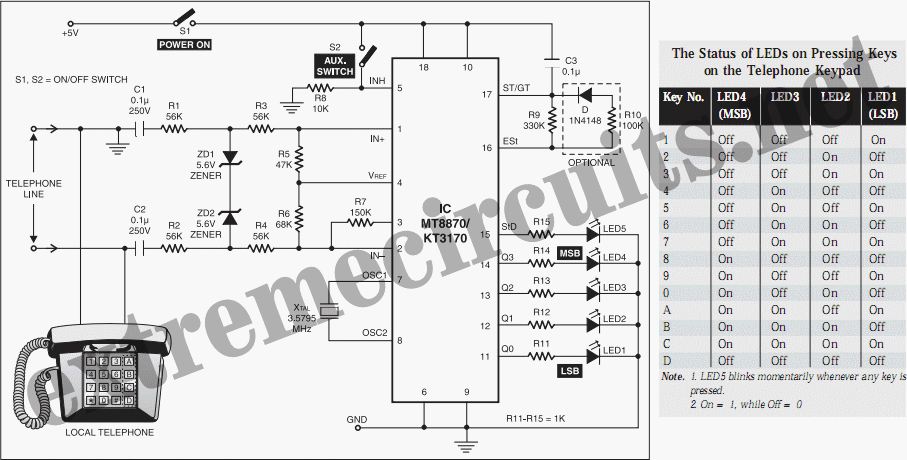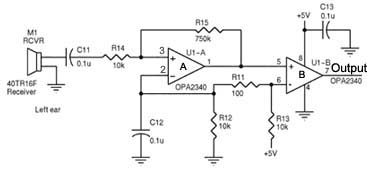
AM Receiver
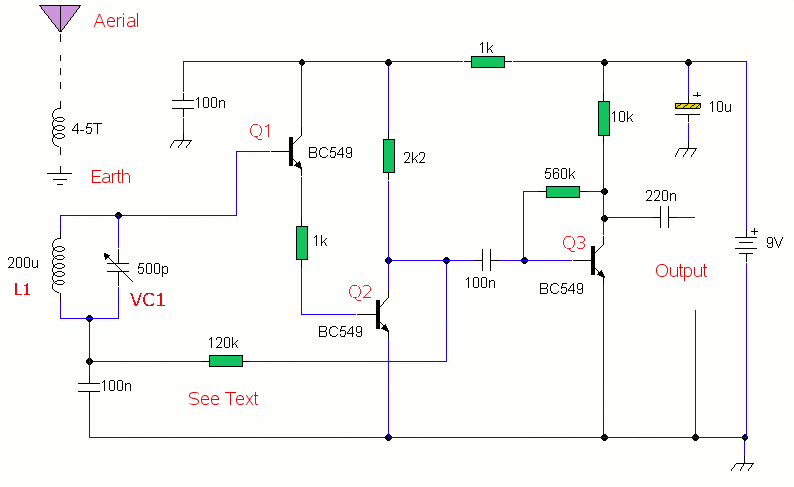
This is a compact three transistor, regenerative receiver with fixed feedback. It is similar in principle to the ZN414 radio IC which is now replaced by the MK484. The design is simple and sensitivity and selectivity of the receiver are good. All general purpose transistors should work in this circuit, I used three BC549 transistors in my prototype. The tuned circuit is designed for medium wave, but the circuit will work up to much higher frequencies if a different tuning coil and capacitor are used. I used a ferrite rod and tuning capacitor from an old radio which tuned from approximately 550 - 1600kHz.
The described regenerative receiver circuit operates with three transistors configured to amplify radio frequency signals. The architecture employs feedback to enhance sensitivity, making it suitable for medium wave reception. The use of three BC549 transistors indicates a preference for general-purpose components, which are widely available and cost-effective.
The tuned circuit, essential for selecting the desired frequency, consists of an inductor (tuning coil) and a variable capacitor. The original design is optimized for medium wave frequencies, specifically within the range of 550 kHz to 1600 kHz. However, the circuit's flexibility allows for adjustments in the tuning components, enabling operation at higher frequencies by substituting the tuning coil and capacitor.
In terms of construction, a ferrite rod is utilized as the core for the inductor, which enhances inductance and improves signal reception. The tuning capacitor, salvaged from an old radio, provides the necessary capacitance to tune the circuit effectively. The regenerative feedback loop is critical, as it allows the circuit to amplify weak signals, thus improving the overall performance in terms of sensitivity and selectivity.
To construct this receiver, careful attention must be paid to the layout and connections to minimize interference and maximize performance. The circuit can be housed in a compact enclosure, making it portable and practical for various applications. Overall, this regenerative receiver design offers an accessible introduction to radio frequency engineering and can serve as a foundation for further experimentation and enhancement in radio communications.This is a compact three transistor, regenerative receiver with fixed feedback. It is similar in principle to the ZN414 radio IC which is now replaced by the MK484. The design is simple and sensitivity and selectivity of the receiver are good. All general purpose transistors should work in this circuit, I used three BC549 transistors in my prototype. The tuned circuit is designed for medium wave, but the circuit will work up to much higher frequencies if a different tuning coil and capacitor are used.
I used a ferrite rod and tuning capacitor from an old radio which tuned from approximately 550 - 1600kHz. 🔗 External reference
The described regenerative receiver circuit operates with three transistors configured to amplify radio frequency signals. The architecture employs feedback to enhance sensitivity, making it suitable for medium wave reception. The use of three BC549 transistors indicates a preference for general-purpose components, which are widely available and cost-effective.
The tuned circuit, essential for selecting the desired frequency, consists of an inductor (tuning coil) and a variable capacitor. The original design is optimized for medium wave frequencies, specifically within the range of 550 kHz to 1600 kHz. However, the circuit's flexibility allows for adjustments in the tuning components, enabling operation at higher frequencies by substituting the tuning coil and capacitor.
In terms of construction, a ferrite rod is utilized as the core for the inductor, which enhances inductance and improves signal reception. The tuning capacitor, salvaged from an old radio, provides the necessary capacitance to tune the circuit effectively. The regenerative feedback loop is critical, as it allows the circuit to amplify weak signals, thus improving the overall performance in terms of sensitivity and selectivity.
To construct this receiver, careful attention must be paid to the layout and connections to minimize interference and maximize performance. The circuit can be housed in a compact enclosure, making it portable and practical for various applications. Overall, this regenerative receiver design offers an accessible introduction to radio frequency engineering and can serve as a foundation for further experimentation and enhancement in radio communications.This is a compact three transistor, regenerative receiver with fixed feedback. It is similar in principle to the ZN414 radio IC which is now replaced by the MK484. The design is simple and sensitivity and selectivity of the receiver are good. All general purpose transistors should work in this circuit, I used three BC549 transistors in my prototype. The tuned circuit is designed for medium wave, but the circuit will work up to much higher frequencies if a different tuning coil and capacitor are used.
I used a ferrite rod and tuning capacitor from an old radio which tuned from approximately 550 - 1600kHz. 🔗 External reference
